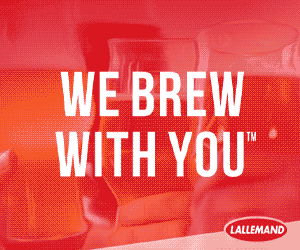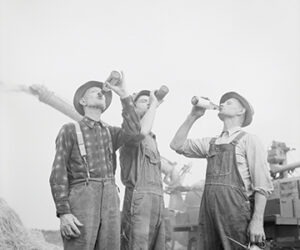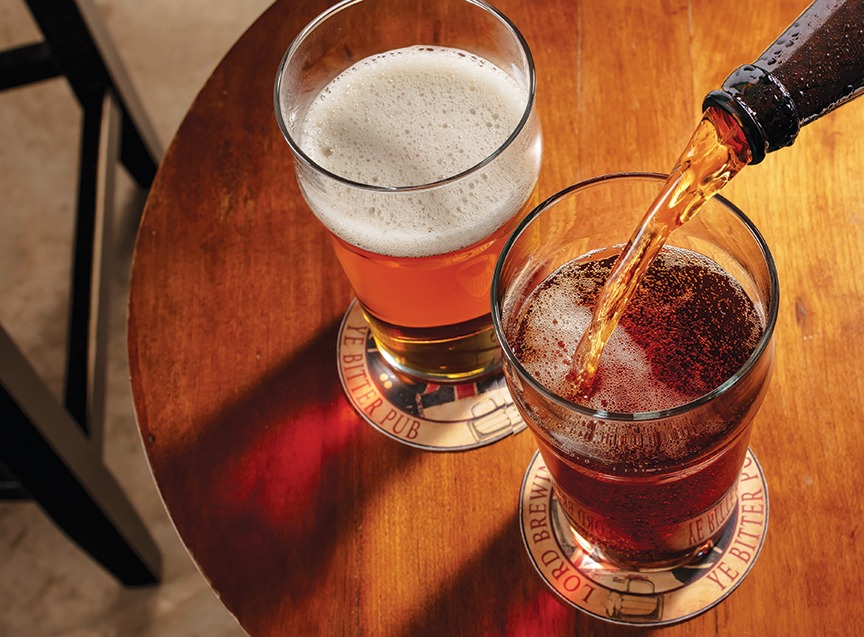Pivo, Please
When American craft brewers discuss influences from other countries’ historical brewing traditions, you can expect them to mention England, Germany, and Belgium. But how many would include the Czech Republic (Czechia)? I have a feeling that many Americans think of Czech beer as just German beer made with soft water and Saaz hops. While those are certainly part of the story, there is a lot more to Czech beer than that.
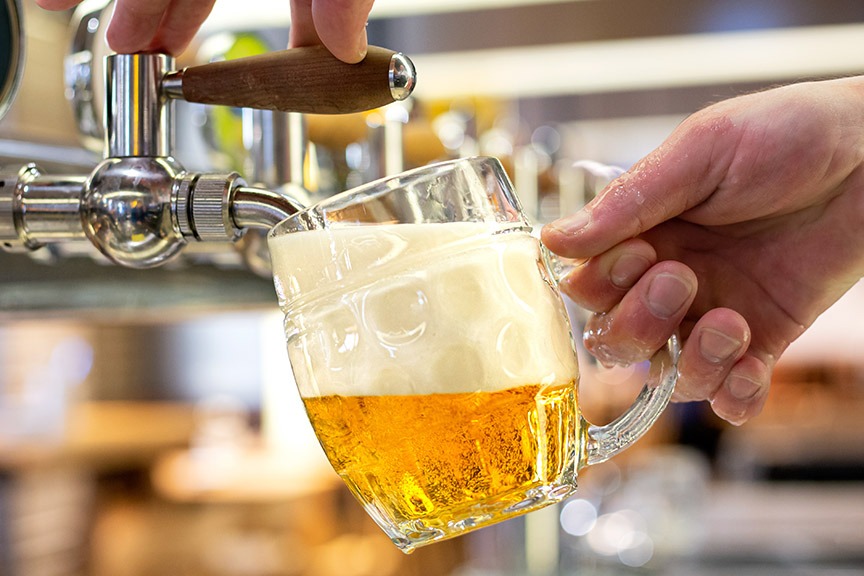
České pivo (Czech beer) is actually recognized as a protected geographical indication (PGI) within the European Union, which gives it the weight of law. Its definition lists quality parameters, production methods, and ingredient limitations, as well as sensory aspects that distinguish it from other European beers. Not all beer in Czechia meets these criteria, but those that use the protected name certainly do. It’s like a trademark or appellation; it protects the intellectual property of the product, and guarantees that it meets defined quality standards.
While this all sounds like legalese, it does actually provide concrete evidence for something that I have been claiming for a long time — that Czech brewers have a tradition of decoction mashing, and it is an important part of their national beer character. Decoction mashing refers to removing a portion of the mash, typically a third, bringing that portion to a boil for a set time, and remixing it with the main mash to achieve a higher rest temperature The definition of České pivo mandates that a decoction mash (single, double, or triple) MUST be used. We’ll get into the other aspects of the beer, but this is very important.
Classification of Czech Beer
Czechia uses a matrix of color and original gravity (measured in degrees Balling, which is equivalent to degrees Plato and Brix) to classify beers. The colors are světlé (pale), tmavé (dark), and polotmavé (amber, or literally, half-dark). A small number of beers may be described as černé (black), but this is basically a synonym for dark. The gravity classes are known as stolní (table beer, less than 6 °Plato/1.023 OG), výčepní (draft, 7–10 °Plato/1.027–1.040 OG), ležák (lager, 11–12 °Plato/1.044–1.048 OG), and speciální (special, 13 °Plato/1.053 OG and greater). Porter is a subset of special beers that is a dark beer greater than 18 °Plato/1.074+ OG, but there are many other types of strong lager.
The use of gravity bands to define beers is not uniquely Czech — Germany uses a similar system of schankbier, vollbier, and starkbier. But the Czechs display the gravity more prominently, and often use the number as the name or identifier for the beer. The výčepní and ležák class beers are more commonly found, as are the světlé and tmavé colors.
You’ll notice that “Pilsner” isn’t used as a name of any of these beers, as it is in other countries. In Czechia, Pilsner means Pilsner Urquell, the beer from Plzeň (Pilsen). Similar beers are called světlé ležák, or pale lagers. Judges and brewers outside Czechia commonly call them either Czech Pilsners or Bohemian Pilsners, particularly when trying to distinguish them from German Pils or American Pilsners. As a sidenote, Pilsner is sometimes spelled Pilsener; both are correct.
The Beer Judge Certification Program (BJCP) differentiates výčepní beers as Czech pale lagers (Style 3A) and ležák as Czech premium pale lagers (Style 3B), avoiding the use of Pilsner as the style name out of respect for the origin of the style. The other defined Czech styles are Czech amber lager (Style 3C) and Czech dark lager (Style 3D). These are a subset of beers made in Czechia, but have been enough to drive interest in commercial brewers making these styles elsewhere.
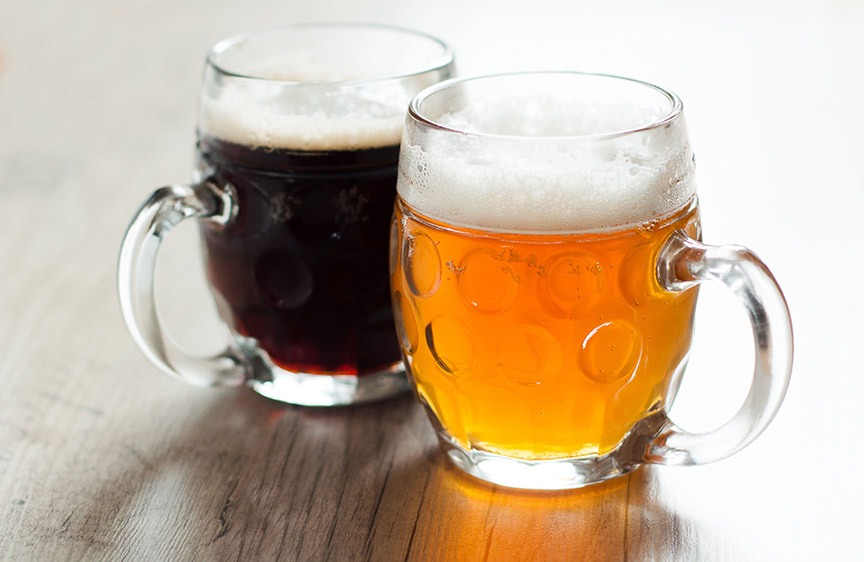
The Czech styles listed in the BJCP guidelines represent a necessary collapsing of multiple categories of Czech beer to facilitate judging. Just be aware that the defined styles represent ranges of beers, and that multiple types of beer can fit within each category. As with most styles, the range of commercial examples can vary quite a bit, so it’s easy to find examples with differing balances, amounts of bitterness, and varying levels of sweetness or dryness in the finish.
Characteristics of Czech Beer
I tend to talk about Czech beer characteristics in both absolute and relative terms. Absolute when they can be quantified, but relative to German because they are often better known and serve as a useful frame of reference. To me, the biggest sensory difference about Czech beer compared to German is the mouthfeel. Czech beers have a fuller body and finish with a higher unfermented residual extract, which can sometimes be perceived as sweetness. Czechs describe their beer as having a fullness on the palate. On an absolute basis, the body is medium-to-full for many beers.
Czech beers are generally well-hopped and have a medium to high bitterness (standard-strength lagers can range up to 45 IBUs). The bitterness is not harsh, however, and the impression of bitterness is somewhat tempered by the fuller finish. Czech beer tends to have a higher finishing pH and polyphenol (tannin) level, which can also give a fuller mouthfeel and a reduced crispness.
Paler Czech lagers tend to have a deeper color than similar German beers due to decoction mashing, which often pushes them more into gold and even bronze and away from the straw to yellow colors of German lagers. Dark Czech lagers are rarely black, with dark brownish colors being the norm. Good clarity is prized, particularly in pale lagers.
Czech beers have a creamy head with a rich, natural foam, and are well carbonated. The foam is often accentuated by the characteristic Czech side pull taps (sometimes called LUKR taps, after the popular LUKR manufacturer that makes them). These taps have a ball valve that allows for a variable flow rate, as well as micro screens that normalize bubble size as the beer is dispensed. These features allow for pours with a varying amount of foam, which customers can request. Compare these to the standard North American beer tap faucet, often known as the Perlick style after the most common premium brand. Read more about the popular Czech pours in the sidebar below.
Czech Beer Pours (sidebar by Bill Jablonski)
A perfectly poured pint can be a thing of simple joy. But what is a perfectly poured pint? In many parts of the world it looks like a beer with two fingers of foam sitting on top. Poured into a clean, style-appropriate glassware, the beer with a beautiful crown of foam on top is a thing of beauty.
There may be no place in the world where beer presentation is more appreciated, critiqued, and talked about than the Czech Republic. Here, there are three primary (and at least two more, less common) types of pours, each resulting in a different amount of foam atop the glass and resulting in differing flavors when the same beer is poured each way.
The key to pouring beer with varying and exacting levels of wet foam is the uniquely designed side-pull faucet. We will discuss the faucets more later, but the so-called “wet foam” is much more dense/frothy than traditional draft foam and looks like a steamed milk. In addition to creating a silky clean surface on top of the beer, the foam serves to keep the beer fresher for longer, protecting it from oxygen and keeping the CO2 in the beer. The pours are one of the key pillars of Czech beer culture.
Before we get into the specific beer pouring types, we should consider what beer foam is and why it matters. Carbon dioxide gas (CO2) is dissolved within the beer. The dissolved gas in the liquid beer is carbonic acid, and its low pH provides the bite and twang within all carbonated beverages. Flat beer tastes sweet because the acidic backbone that balances the malt sweetness is missing. Beer foam is CO2 gas that has made a temporary stop between being dissolved in liquid and being released into atmosphere. As the gas bubbles explode in the nose and on the tongue, we experience some of this acidity. Quality malt, quality brewing technique, and a little bit of protein and hop acid structure help to retain a tight foam. Brewers using low-quality ingredients can add foam stabilizers, but nobody is fooled. Let’s get on to these unique Czech pours:

Hladinka (smooth)
Roughly one-third foam and two-thirds beer. The foam is produced first, and the clear beer follows, being poured beneath the foam by submerging the extended faucet below the foam to the bottom of the glass. Foam floats and this sequence makes sense. It is said that the creamy head balances the bitterness and sweetness of the beer. This beer pour is essentially a typical North American pour, only with much more foam.
Šnyt (split)
Similar to the Hladinka but more foam — anywhere from half to two-thirds of the glass is foam (it’s split between beer and foam, hence the name). That’s a lot of foam. Czechs like this style as a less filling drink.
Mliko (milk)
Mliko is the word for milk in Czech, so you can see where this one goes. All foam, tight and intended to be consumed quickly. Sometimes as a dessert beer (because we are in the Czech Republic). This pour is so striking that it defies expectations and is worth the effort. Because the beer-to-foam ratio is slight, one serving is quite slim on actual liquid beer. This is not the worst thing after a long evening of indulgence.
Čochtan (neat)
Beer with no foam. No fun. The Czechs don’t particularly care for it either.
Nadvakrát (twice)
Similar to the Hladinka, only a short pause between the first foam pour and the subsequent beer pour. The pause is intended to let some of the gas escape, making for a less carbonated beverage and a little easier digestion. A niche within a niche, but a distinction with merit.
Side-Pull Faucets
OK, how do you produce these wonderful Czech-style pours at home? You’ll need the special Czech side-pull beer faucet on your home draft system. Bottle-conditioned beer or a normal faucet can’t be substituted, unfortunately.
There are some options for side-pull faucets. LUKR (all caps) is the go-to. This faucet has the specialized mechanism that allows for a forced, thick, creamy head. It works a bit like a dimmer switch and makes some spectacular wet foam, with an extended spout that gets to the bottom of the glass, allowing beer to be poured beneath the foam. It does come with a very steep $400 price, and homebrewers (or anyone using these faucets) must keep in mind that the cool side-pull handle demands a lot of real estate (though they do have an option that is designed to take up less space). The Euro-to-domestic shank adapter that puts an already long faucet towards 1976 Elvis Cadillac length will also demand a drip tray upgrade.
Beyond LUKR, other routes to go are a CBS Beverage or a Micromatic clone. Not quite as cool. Not quite authentic. But all the performance, with a domestic threaded shank, for about $300 less.
The Czech Republic produces lager beer almost exclusively, and it’s most often of the pale (světlé ležák) variety. That said, there is nothing stopping us homebrewers from experimenting with a variety of styles here, and I expect as more beer bars offer Czech pours, we will start to see the techniques applied to different styles.
So how do you perfect these pours? There are numerous videos online, but this is the part that you, the homebrewer, gets to discover. Open the faucet just so, control the flow exactly as needed to get the foam you’re looking for, and then adjust the faucet so the beer flows, raising the foam to the top of the glass. Get to be the resident expert, and then impart that wisdom to the next brewer in your circle. Enjoy the magic of homebrewed beer, personally served to friends and family.
Producing Czech Beer
The ingredients in Czech beer produce much of the character and are specified within the PGI. The gold standard for hops is the Žatec (Saaz) variety and region, although hops from other Czech hop-growing areas are allowed. Whole hops are typically used. Dry hopping (or any cold-side hopping) is not used. First wort hopping — adding hops to the kettle before or during lautering, prior to the wort being brought to a boil — is a technique known to Czech brewers, and is often used to produce a smoother bitterness.

Pale malt of the Pilsner type from Czech regions is used. The English influence is present in the kilning methods, which aided in the development of the first pale lagers. As I previously mentioned, decoction mashing is required. Czechs believe that double decoction is preferable to single decoction, but some products (notably Pilsner Urquell) are still triple decocted. Czech malts tend to have lower levels of proteolytic modification, which favors a lower level of attenuation in the finished beer.
Compared to German beers, more caramel and dark malts are used in darker beers with less of a Munich/Vienna-type malt base. Pilsner-type malt (even if called “pale malt”) is the typical base. Richness is gained more through malting and decoction methods, which develop flavor as well as body and color. Roasted malts, when used, tend not to have burnt flavors. Czech beers are all malt; no sugars or adjuncts are used.
Water is described as soft-to-medium hard, with that from Pilsen being quite low in minerals. Bottom-fermenting lager yeast is used, with three common strains being available to Czech brewers. Their yeast strains tend to have lower attenuation than many German strains, and are often described as not being as “clean.” Czech beer can have a threshold buttery character from diacetyl that enhances caramel flavors and body when fresh, but should not have a strong or harsh quality. This profile tends to be desired by Czech consumers.
Czech beer undergoes a two-stage fermentation process, basically fermentation and lagering. The maximum fermentation temperature allowed is 57 °F (14 °C) but is traditionally cooler and slower, often below 50 °F (10 °C). Lagering is conducted at near-freezing temperatures and is often lengthy, until quality parameters are met. Open fermentation is still a technique practiced by many Czech brewers.
Historical Evolution
While there is evidence of brewing in Czechia for more than 1,000 years, modern Czech beer is inextricably linked to the Pilsner origin story. As we all know, Josef Groll first brewed Pilsner Urquell in 1842 in Plzeň, marking the start of popularizing pale lager. Using kilning techniques learned in England (then still the British Empire) and bottom-fermenting lager yeast obtained in Bavaria (then still a kingdom, as Germany didn’t become unified until 1871), local ingredients and Central European methods of the time were used to develop industrial brewing.
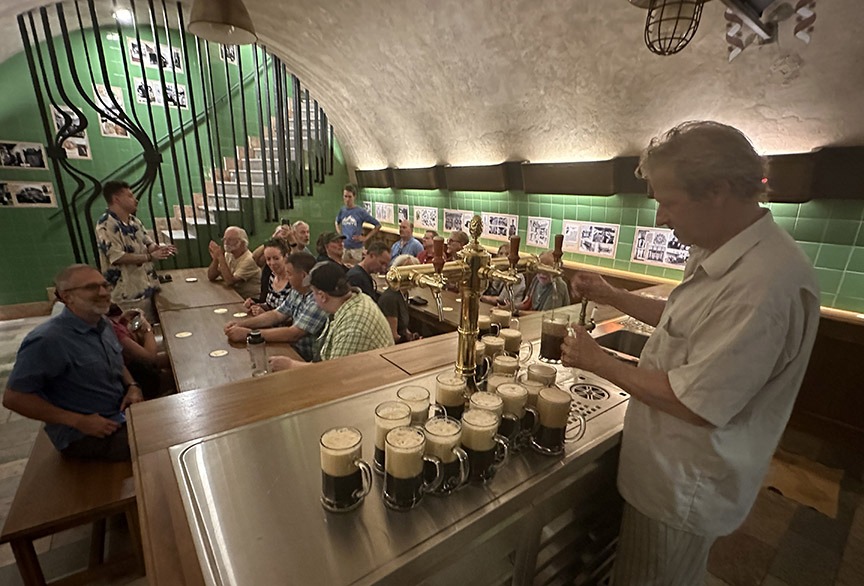
Czech beer continued to develop and expand in influence in Central Europe as lager brewing became more popular and consumer tastes for paler beer grew. However, modernization in brewing all but ceased in what was then-Czechoslovakia in the late 1930s as it first was occupied by Germany, and later came under communist control until the peaceful Velvet Revolution of 1989.
This unfortunate 40+ years of Czech history did have the effect of creating a kind of time capsule of brewing. Brewing in the Czech Republic of the 1990s resembled Bavarian brewing pre-WWII. This preservation of traditional beer production methods is one important aspect of modern Czech beer. While it is reasonable to see a common origin of German and Czech brewing traditions, the split almost a hundred years ago created differences that are still noticeable today. German brewing modernized and changed, while Czech brewing preserved many of the more historical and traditional ways that distinguish Czech beer today (learn more about Czech beer culture and the influence history has played in the sidebar below).
While there may not be explicit stylistic links between German and Czech beer, I often think about the parallel nature of many styles. Take a German/Austrian style of today and apply the Czech national character to get a modern Czech style: German Pils and Czech pale lager, German dunkel and Czech dark lager, Vienna lager and Czech amber lager, Baltic porter (or possibly doppelbock) and Czech porter. The cited styles, even more so when considering their strength variations, do reflect a national brewing character that is worth understanding and appreciating.
Industrial Lagers Remain King in the Czech Republic (sidebar by Jakub Neuzil)
The Czech Republic is globally known for their great-quality and affordable lagers. Despite the old saying that beer in Czech is “cheaper than water,” this has not been true for several years now. However, many of the country’s industrial breweries have been less impacted by price increases than other manufacturers of consumer goods, offering a decent quality beer for everyone at an affordable price — just like the Communist government wanted it during the 41 years of dictatorship (from 1949–1989). As an economist, I always find this fascinating as this model did not last in any other post-Communist country or merchandise category. Beer remains the “liquid bread,” and for a lot of people is not even thought of as an alcoholic beverage. Many, including myself, still remember the early 2000s when, as children, we used to run to the store to buy beer for our fathers. That’s how deep it is rooted to Czech culture and society.
Now, just one generation later, keeping in mind the general inflation caused by COVID, decrease in consumption due to Gen Z spending priorities and health concerns, and particularly high inflation in the gastronomy business (38% officially, therefore the move from on-trade consumption to retail), the big corporate breweries adapted, but where are the craft breweries? How do the 500 smaller Czech craft small beer producers survive with only a 4% market share in the country?
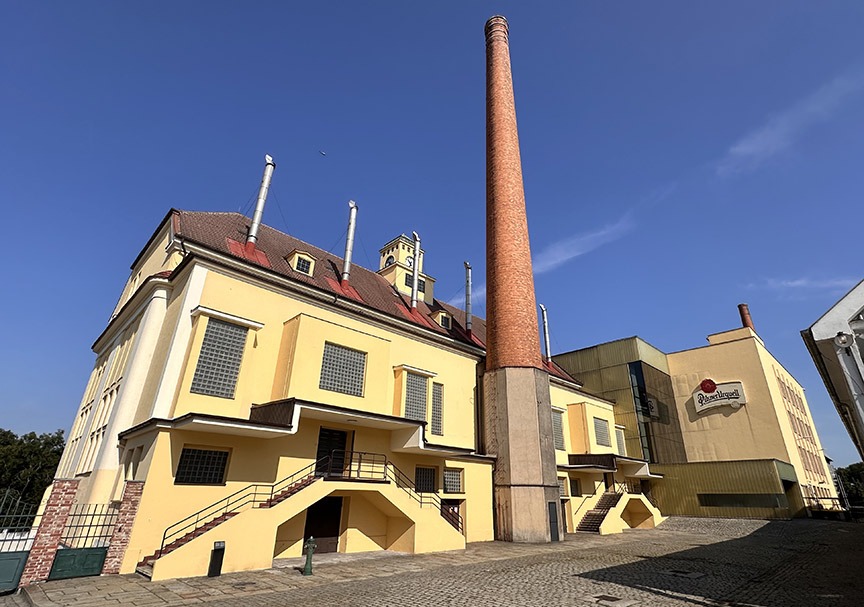
Usually, craft beer is stronger in countries where the big industrial lagers don’t offer a whole lot of flavor. A small segment of beer enthusiasts, tired of the boring industrial lager possibly brewed by the same corporation in every country, supports and is willing to pay more for more interesting flavors. But Czechs are different. A very unique case of high-quality industrial lager combines with the small segment looking for even higher quality and variety of styles. And to be honest, since the country’s market has been dominated by Pilsner Urquell (part of Asahi Group) for so many decades, it has had a very strong impact on the Czech perception of quality beer. Czechs are proud of it and see it as something the other breweries globally should copy (which is what actually happened after they brewed the first Pilsner in 1842). This position remains unshaken and despite being challenged by other famous Czech brands (e.g., Budvar, Staropramen, Bernard . . .), Pilsner Urquell has remained the gold standard for the Czech people, including craft beer lovers, which can be easily witnessed during the last weeks before Christmas when every supermarket chain tries to sell Pilsner Urquell multipacks in promotion expecting high sales of their other merchandise (a very smart marketing move), and in summer when we pack full trays of beer cans into our cars on the way to Croatian beaches.
So circling back to the question put forward at the beginning: Craft breweries can be successful. And they are. But they are trapped between two trends: 1. The average Czech likes beer, but probably just a lager with approximately 40 IBUs, and expects a decent price, craft or not. And an even lower price if the beer is not Pilsner Urquell. 2. A small community of craft beer fans are looking for something new, but this group is not big enough to create a demand for the craft beer output to be very successful.
The result of these two trends means to be successful as a craft brewery you have to produce a good lager, upon which you will be judged by the people. And you must not just have it in the portfolio, it must be a vast majority of your production in order to pay the bills. And despite the expense to brew the beer being much higher than Pilsner Urquell’s, you must sell it for the same price, if not less. Only after that is the craft brewery able to focus on the minority of their output in IPAs, pale ales, stouts, sours, and other more flavorful styles for the craft crowd looking for something different.

And where are homebrewers in this?
Many homebrewers share the same dream: To one day have their own brewery where they will brew beer professionally on a bigger scale and share with the world their amazing recipes.
As an economist and a business consultant, I have worked with a lot of people with this dream. We often met in their small garage brewery, tasted several beers, and talked about their hopes, wishes, and plans. And in a vast majority of cases I heard the wish — “I want to brew a high-quality light, cheap lager that is the best in the country.” To that, I explain the efficiency triangle where each point of the triangle represents a different quality, but which each point can be only paired and never be all three of the points. At the end of the points are: Low price, quality, and speed. So, just like in any other industry, nothing can be made in a cheap and fast way with high quality, just like nothing can be made fast with high quality but cheap, etc.
This moment in the consultation is always the conjunction of the two groups, two trends so typical for the Czech customers. And the same applies to pubs and restaurants. Even craft beer bars must respect the role and reputation of the leader and price sensitivity of the customers. There are cases in which pubs sell beer just to cover the cost and only make money on food sales.
With an even more difficult path to profit for startup craft brewers, it means homebrewing is less a trajectory to going pro, but a hobby just done for fun. And that’s how it should be in this economic situation. Or, in my case included, it should be an eyeopening path to deeper knowledge of beer and brewing.
Final Comments
Prior to the 2015 BJCP Guidelines update that increased the awareness of traditional Czech styles beyond beers like Pilsner Urquell, it was often hard to find examples of Czech beers in the U.S. You could find some mentions in Michael Jackson’s books, but it was hard to find examples you could buy in stores or brewpubs. I’m happy to see so many U.S. (and elsewhere) craft breweries who are attempting Czech styles, especially those that are either specializing in them or in lager beer production in general.
I had wanted to introduce Czech styles (at least the dark lager) in the 2004 guidelines, but I was met with resistance because they either weren’t being entered in competitions or weren’t available as imports. I’m glad the BJCP has become more of an international organization since that has encouraged the exploration of more world beer styles and a better understanding of brewing traditions of important countries in the development of modern beer.
There is still more Czech beer to explore and understand, and the BJCP guidelines are just hitting some of the highlights at the moment. Don’t let the beer styles defined for homebrew competitions give you an incomplete understanding of the range of Czech beer. Those with a taste for travel can seek out local examples, of course. For those who wish to research further, the writings of Evan Rail, Ron Pattinson, and Jeff Alworth are always informative.
Czech Pale Lager
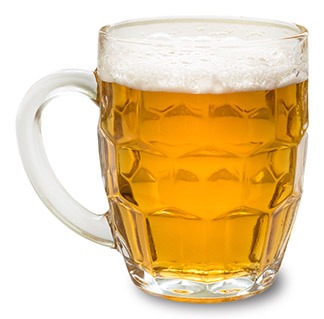
(5 gallons/19 L, all-grain)
OG = 1.048 FG = 1.012
IBU = 43 SRM = 5 ABV = 4.7%
Ingredients
9.75 lbs. (4.4 kg) Czech Pilsner (Bohemian pale ale) malt
8.6 AAU Czech Saaz hops (first wort hop) (2.25 oz./64 g at 3.8% alpha acids)}
2.9 AAU Czech Saaz hops (60 min.) (0.75 oz./21 g at 3.8% alpha acids)
1 oz. (28 g) Czech Saaz hops (whirlpool)
White Labs WLP802 (Czech Budejovice Lager), Wyeast 2000-PC (Budvar Lager), or Mangrove Jack’s M84 (Bohemian Lager) yeast
3⁄4 cup corn sugar (for priming)
Step by Step
This recipe uses reverse osmosis (RO) water. Adjust all brewing water to a pH of 5.5 using phosphoric acid. Add 1 tsp. of calcium chloride to the mash.
This recipe uses a double decoction mash, with some step mashing. Use enough water to have a moderately thin mash (2 qts./lb.). Mash in the Pilsner malt at 131 °F (55 °C) and hold for 10 minutes.
Pull the first decoction, resting it at 149 °F (65 °C) for 15 minutes and 162 °F (72 °C) for 15 minutes, before boiling for 15 minutes. Mix the decoction portion back with the main mash. The mash should now be at 149 °F (65 °C). Allow the mash to rest for 15 minutes.
Pull the second decoction, resting it at 162 °F (72 °C) for 15 minutes, before boiling for 15 minutes. Mix the decoction portion back with the main mash. The mash should now be at 162 °F (72 °C). Allow the mash to rest for 15 minutes.
Drain a thin portion of the mash, bring to a boil, and return to the main mash to raise the mash temperature to 170 °F (77 °C), then recirculate for 20 minutes.
Add the first wort hops to the kettle. Sparge slowly and collect 6.5 gallons (24.5 L) of wort. Boil the wort for 90 minutes, adding hops at the times indicated in the recipe.
Chill the wort to 54 °F (12 °C), pitch the yeast, and ferment until complete. Rack the beer and lager at 32 °F (0 °C) for 4–8 weeks.
Rack the beer, prime and bottle condition, or keg and force carbonate.
Czech Light Lager
(5 gallons/19 L, extract only)
OG = 1.048 FG = 1.012
IBU = 43 SRM = 5 ABV = 4.7%
Ingredients
6.6 lbs. (3 kg) light liquid malt extract
8.6 AAU Czech Saaz hops (first wort hop) (2.25 oz./64 g at 3.8% alpha acids)}
2.9 AAU Czech Saaz hops (60 min.) (0.75 oz./21 g at 3.8% alpha acids)
1 oz. (28 g) Czech Saaz hops (whirlpool)
White Labs WLP802 (Czech Budejovice Lager), Wyeast 2000-PC (Budvar Lager), or Mangrove Jack’s M84 (Bohemian Lager) yeast
3⁄4 cup corn sugar (for priming)
Step by Step
Use 6 gallons (23 L) of water in the brew kettle; bring to a boil and then turn off the heat. Add the malt extract and stir thoroughly to dissolve completely. You do not want to feel liquid extract at the bottom of the kettle when stirring with your spoon. Add the first wort hops. Turn the heat back on and bring to a boil.
Boil the wort for 60 minutes, adding remaining hops at the times indicated.
Chill the wort to 54 °F (12 °C), pitch the yeast, and ferment until complete. Rack the beer and lager at 32 °F (0 °C) for 4–8 weeks.
Rack the beer, prime and bottle condition, or keg and force carbonate.
Czech Dark Lager
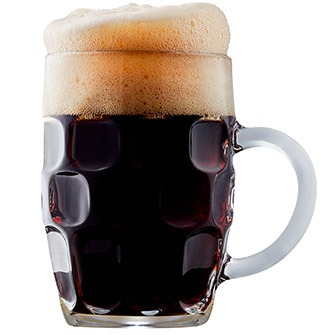
(5 gallons/19 L, all-grain)
OG = 1.052 FG = 1.014
IBU = 30 SRM = 27 ABV = 5%
Ingredients
5.7 lbs. (2.6 kg) Czech Pilsner (Bohemian pale ale) malt
3.3 lbs. (1.5 kg) Czech Munich-type malt
1.7 lbs. (750 g) Czech crystal malt (60–70 °L)
8 oz. (227 g) Czech debittered black malt
3.8 AAU Czech Saaz hops (first wort hop) (1 oz./28 g at 3.8% alpha acids)
3.8 AAU Czech Saaz hops (60 min.) (1 oz./28 g at 3.8% alpha acids)
1 oz. (28 g) Czech Saaz hops (5 min.)
White Labs WLP802 (Czech Budejovice Lager), Wyeast 2000-PC (Budvar Lager), or Mangrove Jack’s M84 (Bohemian Lager) yeast
3⁄4 cup corn sugar (if priming)
Step by Step
This recipe uses reverse osmosis (RO) water. Adjust all brewing water to a pH of 5.5 using phosphoric acid. Add 1 tsp. of calcium chloride to the mash.
This recipe uses a double decoction mash, with some step mashing. Use enough water to have a moderately thin mash (2 qts./lb.). Mash in the Pilsner and Munich malts at 99 °F (37 °C) and hold for 10 minutes. Raise the mash temperature to 127 °F (53 °C) and hold for 15 minutes.
Pull the first decoction, resting it at 145 °F (63 °C) for 15 minutes and 163 °F (73 °C) for 15 minutes, before boiling for 15 minutes. Mix the decoction portion back with the main mash. The mash should now be at 145 °F (63 °C). Allow the mash to rest for 15 minutes.
Pull the second decoction, resting it at 163 °F (73 °C) for 15 minutes, before boiling for 15 minutes. Mix the decoction portion back with the main mash. The mash should now be at 163 °F (73 °C). Allow the mash to rest for 15 minutes.
Add the crystal and dark malts. Raise the mash temperature to 170 °F (77 °C) and recirculate for 20 minutes.
Add the first wort hops to the kettle. Sparge slowly and collect 6.5 gallons (24.5 L) of wort. Boil the wort for 90 minutes, adding the remaining hops at the times indicated in the recipe.
Chill the wort to 50 °F (10 °C), pitch the yeast, and ferment until complete (which could take up to two weeks). Rack the beer and lager at 32 °F (0 °C) for 13 weeks.
Rack the beer, prime and bottle condition, or keg and force carbonate.
Czech Dark Lager
(5 gallons/19 L, extract with grains)
OG = 1.052 FG = 1.014
IBU = 30 SRM = 27 ABV = 5%
Ingredients
3.7 lbs. (1.7 kg) light liquid malt extract
2.3 lbs. (1 kg) Munich liquid malt extract
1.7 lbs. (750 g) Czech crystal malt (60–70 °L)
8 oz. (227 g) Czech debittered black malt
3.8 AAU Czech Saaz hops (first wort hop) (1 oz./28 g at 3.8% alpha acids)
3.8 AAU Czech Saaz hops (60 min.) (1 oz./28 g at 3.8% alpha acids)
1 oz. (28 g) Czech Saaz hops (5 min.)
White Labs WLP802 (Czech Budejovice Lager), Wyeast 2000-PC (Budvar Lager), or Mangrove Jack’s M84 (Bohemian Lager) yeast
3⁄4 cup corn sugar (if priming)
Step by Step
Use 6 gallons (23 L) of water in the brew kettle; heat to 158 °F (70 °C). Steep the crystal and black malts for 30 minutes, then remove.
Turn off the heat. Add the malt extracts and stir thoroughly to dissolve completely. Add the first wort hops. Turn the heat back on and bring to a boil.
Boil the wort for 60 minutes, adding remaining hops at the times indicated.
Chill the wort to 50 °F (10 °C), pitch the yeast, then ferment until complete. Rack and lager for 8 to 12 weeks at 32 °F (0 °C). Prime and bottle condition, or keg and force carbonate.
